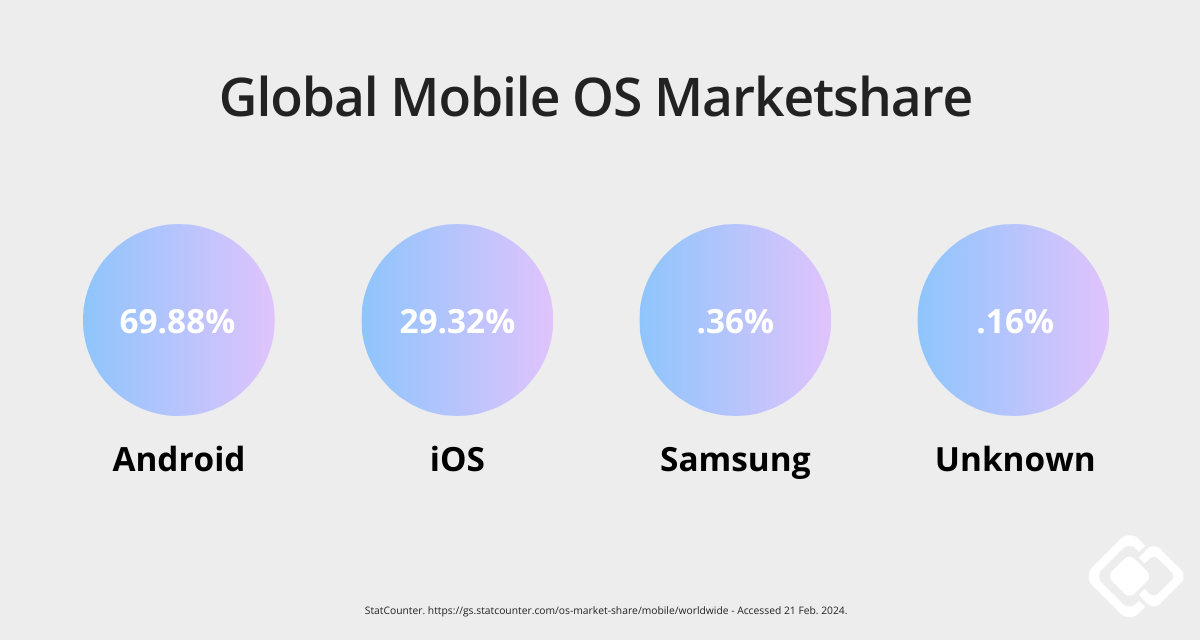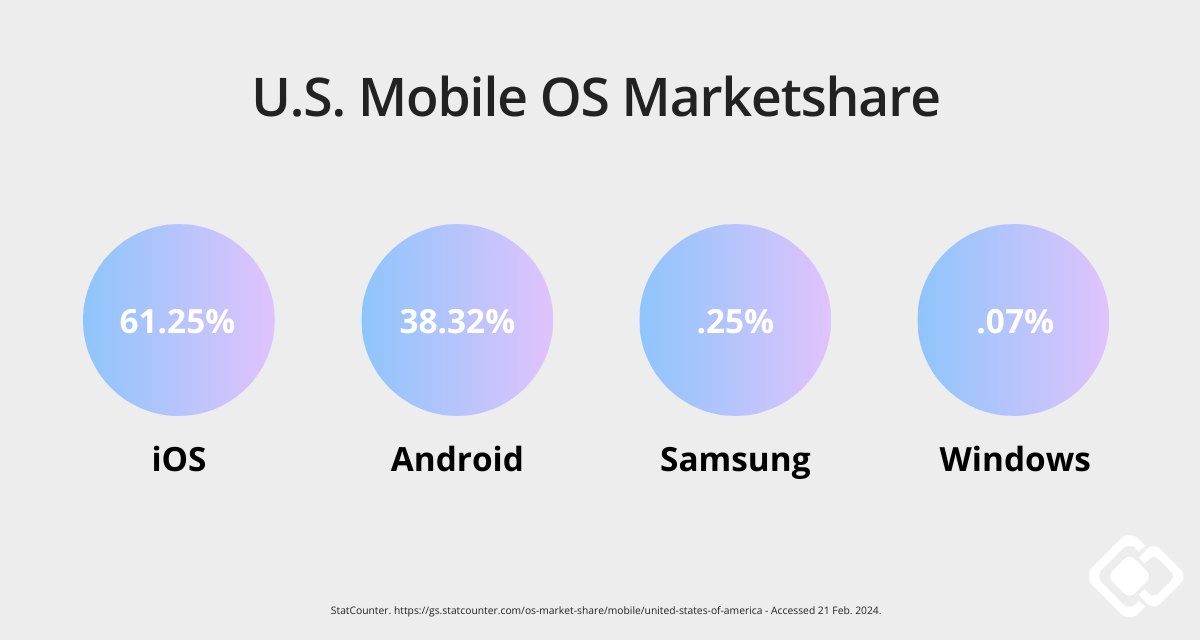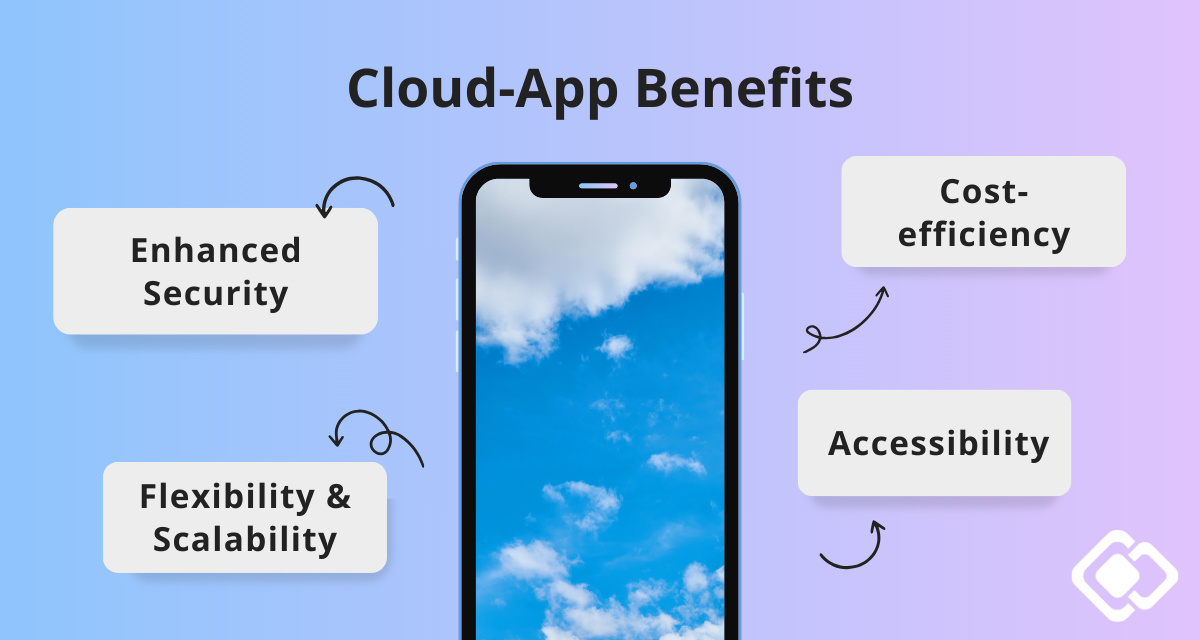
The iOS vs. Android debate feels like it’s been around forever, doesn’t it? It’s not just about which logo you prefer on your phone. These two operating systems really show us different paths for what mobile tech could look like.
iOS, from Apple, is all about that smooth, everything-just-works vibe. It’s designed to be simple and consistent. Android, on the other hand, is Google’s brainchild that plays up how much you can tweak and change things to make your phone truly yours, offering a lot more variety.
But here’s the thing: as we dig into what each platform offers, it’s clear that cloud development is becoming a big deal for both. It’s sort of leveling the playing field by using the cloud to bring the best aspects of each platform into a more unified approach to making apps.
So, what we’re exploring today is how, in this cloud-centric world, the old rifts between iOS and Android aren’t such big hurdles for app creators anymore. As we break down what makes each platform tick, we’ll see how cloud development is offering a way to bridge the gap.
This shift is exciting because it means developers have a shot at making apps that aren’t just cool but are also more reliable, can grow with demand, and are generally easier for everyone to use.
Key Takeaways
- Cloud development is changing mobile app development for the better, bridging the gap between iOS and Android. This integration will help developers create more versatile and accessible applications.
- Tools like Flutter, React Native, and Xamarin are changing the game by allowing developers to use a single codebase to deploy apps across both iOS and Android platforms.
- AWS, Azure, and Google Cloud reduce development time and costs, offering scalable solutions and a variety of services that support diverse programming languages and frameworks.
Let’s start with a quick overview.
Where is Mobile Development in 2024? A Brief Primer
In 2024, the world of mobile development is still largely dominated by two big names: Android and iOS. Each of these platforms has its own unique appeal, drawing in users from around the globe with different needs and habits.
So, what’s the scene like right now for these mobile operating systems, and what does that mean for the folks building apps?
Android continues to lead the pack globally. Its open-source nature has made it the go-to choice for many smartphone brands, allowing it to snag a hefty 69.88% slice of the worldwide mobile OS market. This openness is a big deal – it means Android phones can be priced for everyone, making the platform super popular in places where cost matters a lot.
iOS, on the other hand, powers all those iPhones and holds a 29.39% market share globally. While it might seem like it’s far behind Android in numbers, iOS has a secret weapon: its ecosystem is super tight and controlled. This has been a key factor in making sure apps on iOS are top-notch, which in turn means people spend more money in the App Store than they do on Android apps.
But let’s zoom into the U.S. market for a second.
It’s a different ballgame here. iOS is the winner, with a 61.45% market share, leaving Android with 38.13%. This flip from the global trend highlights just how loyal Apple’s user base is in the States, not to mention that these users are generally willing to open their wallets a bit wider when it comes to app purchases.
For developers, knowing these trends is super important.
If you’re aiming to reach a wide, global audience, Android’s your best bet thanks to its massive share of the market and its flexibility. But if you’re looking to make more money per user, particularly if you’re focusing on the U.S., then iOS might be where you want to be.
Next up, we’re going to dive into what challenges and opportunities developers might face with each OS.
Development Challenges and Solutions
When diving into the intricacies of app development for Android and iOS, several key differences come to light, particularly regarding fragmentation, compatibility, and the development tools and languages used.
Fragmentation and Compatibility
With Android, you’ve got a bit of a wild party. Because it’s open-source, you’ve got a ton of different devices out there – big, small, powerful, not so much. This means making your app work across the board can get kind of hairy. You’ve got to test it on a bunch of different screens, resolutions, and hardware setups, which can really stretch out your development time and effort.
iOS, on the flip side, is more like the exclusive lounge. Apple keeps a tight lid on its ecosystem, so developers don’t have as many variations to worry about. It’s more streamlined, but getting your app through Apple’s door – with its strict review guidelines – can be a bit of a waiting game.
Programming Languages and Development Tools
For Android, you’re looking at Kotlin or Java in your toolkit, and you’ll be hanging out a lot in Android Studio. It’s like your lab, where you’ve got all these tools for building and testing your creation, making sure it’s ready for the wild.
iOS devs work with Swift (or Objective-C if you’re old-school) in XCode, which is pretty much the gold standard for making anything for Apple devices. It’s geared to keep you in line with what Apple expects for its apps, helping you craft something that feels right at home on an iPhone.
Design Philosophy and Development Complexity
When it comes to looks, iOS apps tend to lean towards the clean and simple. Minimalism with a purpose. Android gives you more room to play around, allowing for more complex and customized designs.
But here’s the issue: building for Android can feel like you’re trying to cook a five-course meal in a dozen different kitchens at once. There’s a lot to juggle to make sure your app works everywhere it’s supposed to. iOS might seem easier since you’re basically only cooking in one kitchen, so to speak, but the ingredients (aka development costs) can be pricier, and you’ve got to make everything according to Apple’s recipe.
How Cloud App Development Works
When we talk about making apps that live in the cloud, we’re diving into a way of creating software that’s more intuitive. These apps can grow or shrink in size depending on how many people are using them, they work super fast, and you can use them on just about any device, from your phone to your laptop.
Here’s why they’re a game changer:
- They Grow With You: Imagine if, no matter how many people crowded into a restaurant, it could magically expand to give everyone a seat. That’s what cloud apps do with computing power. They adjust on the fly, so everyone gets a smooth experience, with no waiting in line.
- Work From Anywhere: Whether you’re on a train, at a café, or on your couch, you can pick up right where you left off. Your work, games, or whatever you’re into through these apps look and feel the same across all your gadgets.
- Always Fast: By remembering your most-used data and keeping it handy, these apps make sure that everything you do is quick and snappy.
- Offline? No Problem: Even when you’re out of WiFi range, you can keep working away. These apps cleverly save your work on your device and then zap it back to the cloud once you’re online again. So, you’re never stuck just because you’re offline.
- Consistently Cool: It doesn’t matter where you log in from or what device you use. Everything looks and feels the same. This consistency means you don’t have to waste time adjusting things. You just get on with what you were doing.
But how does it all work?
Behind the scenes, cloud apps use a mix of clever coding and the cloud’s vast resources to make all this possible. They connect to various services via the internet, which allows them to offer all sorts of features and tools without bogging down your device. For the end-user, it’s like having access to a huge library of resources without needing to own every book.
Benefits of Cloud-Based Apps
What is it about cloud-based apps that’s so appealing though? Let’s take a closer look at their overall benefits.
Cost Efficiency
Switching to cloud-based applications is like moving from owning a clunky, gas-guzzling vehicle to having a sleek, efficient subscription service for a fleet of electric cars. No need to spend a fortune on big, bulky servers or the space to house them. You pay for what you use, as you use it, making your budget breathe easier. Plus, you’re cutting down on energy use, so give yourself a high-five for going a bit greener.
Enhanced Security
Now, let’s talk about keeping things safe. Cloud providers can serve as security guards of sorts. They use the latest and greatest in encryption and security to keep the bad guys out and your data safe. For most businesses, getting this level of security on their own would be a tall order, both logistically and financially. But with cloud services, it’s all part of the package, keeping your data locked up tight and in line with the latest regulations.
Flexibility and Scalability
Cloud-based apps grow with you. Suddenly need more space or power? Just a few clicks and you’re set. No more sweating over whether you’ve got too much or too little capacity; you’ve got exactly what you need, right when you need it.
Accessibility
Lastly, cloud apps give you the freedom to work from anywhere. This flexibility is perfect for today’s mobile workforce, making it easier for teams to collaborate, no matter where they are. It also keeps the wheels turning, even if you can’t get to the office. And for your customers? It means you can offer them snappier, more reliable services, no matter the time or place.
Cloud Development is a Unifying Force Between iOS and Android
Cloud development is really changing how we make apps for both iOS and Android. It’s all about using the cloud’s power to make app building smoother and letting developers switch gears between platforms more easily.
Digging Into Cross-Platform Development
Frameworks like Flutter, React Native, and Xamarin are at the forefront of this shift. They’re making it possible to write your app once and then deploy it everywhere, which is pretty great if you ask us.
- Flutter is a standout because it lets you keep both your layout and your logic in the same spot, thanks to Dart. No more flipping between XML and Java or Kotlin. Plus, its hot reload feature is a total time-saver, letting you tweak your app on the fly.
- React Native is all about bringing the power of JavaScript to mobile app development, making apps feel native while letting you share a big chunk of your codebase between iOS and Android.
- Xamarin hooks you up with the ability to use C# for app development across platforms, which can make life a lot easier if you’re looking to target multiple platforms without wanting to learn a new language for each.
The Cloud’s Role in Cutting Development Time and Costs
Cloud platforms like AWS, Azure, and Google Cloud are making a big impact too. They’re helping developers get their apps out there faster and more efficiently by offering a wide range of services that fit whatever project you’re working on. This flexibility, combined with the ability to scale your resources based on user demand, means you can get your app to market quicker and keep it running smoothly no matter how popular it gets.
In the end, whether you choose to develop for iOS, Android, or both using a cross-platform approach depends on your specific project needs, target audience, and budget. Cloud development, with its focus on making the development process more flexible and scalable, is providing an exciting pathway forward for building robust, user-friendly apps more efficiently.
Summary
It’s clear that cloud development is revolutionizing the way apps are created, offering a seamless bridge between iOS and Android platforms. The adoption of cross-platform development tools are making it possible to streamline their workflows, reduce costs, and speed up the time it takes to bring apps to market. This means developer productivity and app consistency across devices is going through the roof. The question is, will you take advantage of it?






